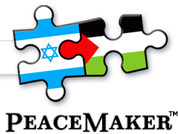
Taking the Fast Lane to Success
The November Giving Carnival asked readers to respond to the question “What best practices in business should nonprofits adopt to maximize their resources?”
Here are thoughts from our experts.

Phil Cubeta of Gift Hub encourages us to look at all the stakeholders of our organization and think of them as a united team. Phil asks: “How can you emerge as your donors’ mission partner?” and urges us to:
“Look for opportunities to reposition yourself in the donor’s brain, from the box marked ‘honored obligations,’ to the box marked ‘mission partner’ or ‘trusted ally.'”
 Dahna Goldstein of Philantech asserts that foundations should act like good public companies through practicing public disclosure, promoting excellent customer service, and sharing stakeholder responsibility. Dahna says:
Dahna Goldstein of Philantech asserts that foundations should act like good public companies through practicing public disclosure, promoting excellent customer service, and sharing stakeholder responsibility. Dahna says:
“Foundations should contribute to growing the field, to building on past successes and failures, to sharing those successes and failures so that others can learn from them, build upon them, and ensure that the public trust is honored.”
Dahna’s response comes to us as part of Sean Stannard Stockton’s One Post Challenge.
 Marc Pitman of the Fundraising Coach has two recommendations. First, that nonprofits should strive to achieve maximum transparency by opening their books to ensure clean accounting. Marc says:
Marc Pitman of the Fundraising Coach has two recommendations. First, that nonprofits should strive to achieve maximum transparency by opening their books to ensure clean accounting. Marc says:
“It means having tight financial controls so that it’s easy to see that the money people give goes directly to the right place.”
Second, Marc advises that nonprofits invest in training: “We have to be life-long learners. Even if you pick up only one thing each time you invest in learning, the investment pays off.”
 Christopher Scott of Nonprofit Leadership, Innovation, and Change has a three part recipe for nonprofit success: building and implementing strategic plans, entrepreneurial involvement with for-profit partners, and developing future leaders. Christopher says:
Christopher Scott of Nonprofit Leadership, Innovation, and Change has a three part recipe for nonprofit success: building and implementing strategic plans, entrepreneurial involvement with for-profit partners, and developing future leaders. Christopher says:
As nonprofit leaders we can reverse what successful for-profit leaders are doing and become very involved with the for-profit business world in our community.”
 Arlene Spencer of the Grant Plant reminds us that the most effective nonprofiteers act with the height of professionalism, saying that we should always strive to “proactively research and learn about modern management paradigms.” Arlene asserts:
Arlene Spencer of the Grant Plant reminds us that the most effective nonprofiteers act with the height of professionalism, saying that we should always strive to “proactively research and learn about modern management paradigms.” Arlene asserts:
“The best business practice that any nonprofit could adopt to serve its organization’s resources is to keep up with and learn modern, effective, ethical management. Implementing demonstrated effective best practices in your organization’s operations, as appropriate, will save your organization money, time, and its reputation.”

Rosetta Thurman of Perspectives from the Pipeline articulates ways in which nonprofits can encourage Generation Y leadership by offering competitive salaries, creating opportunities for professional development, and offering promising young employees key leadership positions to encourage their development. Rosetta says:
“We already have a great pool, but we really need to fix the marketing problem we have in the sector if we want to win the war for talent and convince young people to enter and remain in the nonprofit field.”
Setting the Nonprofit Agenda
It looks as though we have a very clear agenda. According to our experts’ recommendations, nonprofits need to maximize their resources and do the following:
- Invest all stakeholders in our organization’s mission and share stakeholder responsibility
- Empower professional development and create ongoing leadership opportunities
- Practice public disclosure and open accounting
- Strive for excellent customer service
- Plan strategically to establish our long-term agenda
- Partner with successful businesses and community organizations for deeper involvement in our communities
Thanks
Thanks to all our participants for their thoughtful and interesting responses and to Sean Stannard Stockton of Tactical Philanthropy who founded the Carnival.
Are you interested in hosting a carnival, have ideas for the future, or want to offer feedback? Please don’t hesitate to be in touch.
December’s Carnival of Giving
Get Ready for December’s Giving Carnival hosted by Christopher Scott of Nonprofit Leadership, Innovation, and Change. Christopher asks us to think about: “How much does the leadership of an executive director or CEO affect fundraising?”
Send your responses to Christopher by December 20th for inclusion in the Carnival. I can’t wait to hear your thoughts.



 Posted by Maya Norton
Posted by Maya Norton 



 Given Free Rice’s exponential success, I recommend that the program developers add a donation button to the site allowing users to contribute by PayPal or credit card. To do so would advance the United Nation’s millennium goal of eliminating world hunger and create buy-in among users around the globe.
Given Free Rice’s exponential success, I recommend that the program developers add a donation button to the site allowing users to contribute by PayPal or credit card. To do so would advance the United Nation’s millennium goal of eliminating world hunger and create buy-in among users around the globe.




















